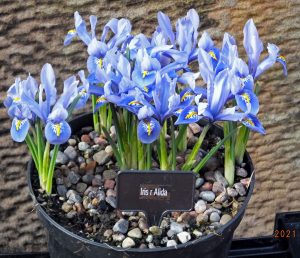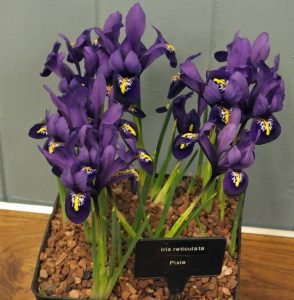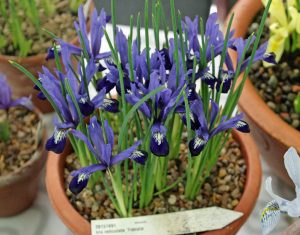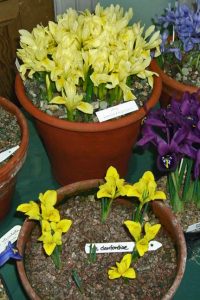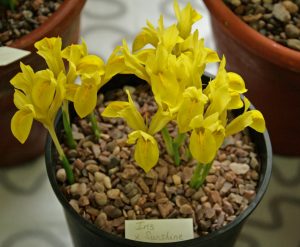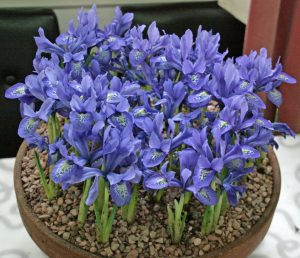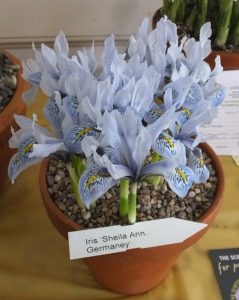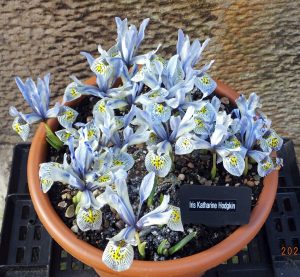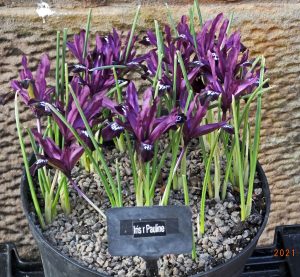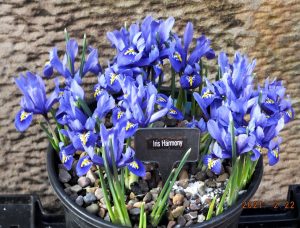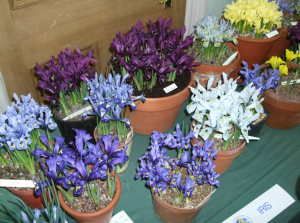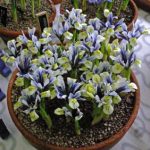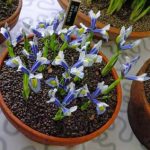Spring – Early Iris time
Early Iris are a wonderful group of hardy plants which have flowers that rival orchids though they tend not to last as long. The genus shows a wide variety of growth forms. The yellow flag Iris pseudacorus is a common waterside plant in this country. The bearded Iris germanica likes dry sunny conditions to ripen its rhizomes. (But more about those in a later blog).
This article concentrates on three small species and their hybrids which are now in flower and can provide a very colourful show in pots or tubs as well as the garden. They grow from small bulbs and like a free draining soil or compost and full sun. They are often all called Iris reticulata – the name comes from the pattern on the surface of the bulbs and most but not all are derived from that species. Most are blue like the old ‘Cantab’ and the newer ‘Alida’, Pixie and ‘Fabiola’.
- Iris Alida
- Iris reticulata Pixie
- Iris Fabiola
Forms of Iris reticulata have a bad habit of deteriorating after a year, usually as they have split into small bulbs that need time to bulk up. Try deeper planting or putting them where they do not dry out too quickly in spring but do dry in summer -perhaps below shrubs.
The worst is the small yellow Iris Iris danfordiae which most people will treat as an annual. Recent crosses made in Canada by Alan McMurtrie with a fertile form of Iiris danfordiae have introduced more varied colours as with Iris ‘Eyecatcher’ or the yellow ’Sunshine’.
- Iris danfordiae (front pot)
- Iris reticulata Sunshine
Iris histrioides is now usually readily available as is the very good blue ‘Lady Beatrix Stanley’. It, and its paler hybrids with the yellow Iris winogradowii, ‘Sheila Ann Germaney, ‘Frank Elder’ and ‘Katharine Hodgkin’, are reliably perennial as are their two paler sports ‘Katharine’s Gold’ and ‘Polar Ice’.
- Iris Lady Beatrix Stanley
- Iris Sheila Ann Germaney
- Iris Katherine Hodgkin
There are several good hybrids that seem to have originated from histrioides x reticulata crossing. The purple ‘Pauline’ and the blue ‘Palm Springs’ and ‘Harmony’ are all good plants that should come up every year. ‘Palm Springs’ is said to be a sport from the purple ‘George’ which is also a good doer but seems to have disappeared from the market.
- Iris Pauline
- Iris Harmony
- Dwarf Iris on the show bench
Apart from ‘George’ all of these bulbs are widely available in the autumn. They are not expensive; some varieties are only £1.50 for ten bulbs.
- A new hybrid
- Another new hybrid
For more info on these bulbs look at the website www.reticulatas.com.


